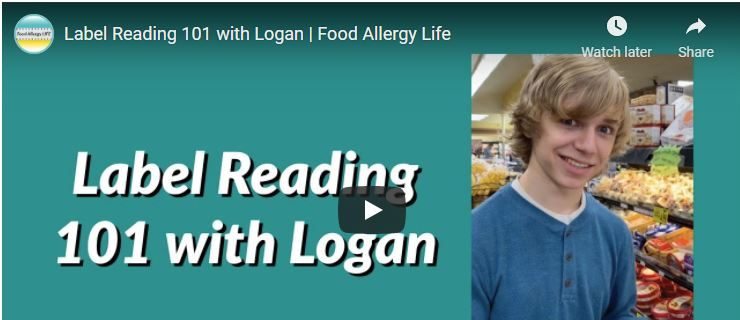Logan Graham (aka @dairyfreedude) takes you to the local grocery store on a quest for safe dairy free snacks.
Watch the video…
Along the way, Logan unravels the mysteries of food label reading and shares some tips to help you become expert at reading food labels so you can avoid your allergens.
Logan’ s Food Label Reading Tips
1. Know your allergen code words.
Know the code words for your allergens. Sometimes allergens can hide under tricky names like whey or casein or lactose for dairy (OR albumen for egg OR tahini for sesame OR triticale for wheat OR satay for peanut…)
2. Learn to use whole, raw, unprocessed foods.
The fewer the ingredients, the easier to know exactly what you’re putting into your body.
3. Check the manufacturer website to verify allergen safety.
This is probably easier done before you go to the store. Always be an informed shopper, especially when exploring new foods.
4. Read labels and ‘may contain’ statements EVERY TIME.
The ‘may contain’ statement is a type of ‘Precautionary Allergen Labeling‘ ** (PAL). This labeling can also indicate if a product is processed on equipment that process your allergens, or in a facility that process your allergens. Know your family rules for translating these statements into a ‘buy’ or ‘do not buy’ decision.
5. Call the manufacturer.
It’s important to ask manufacturers manufacturing practices and cross contamination risks related to their products.
6. Use an app to double check.
It can be frustrating and hard to read labels at the grocery store. The text can be hard to read — super small or lightly colored (like white text on clear plastic packaging. Store lighting can be dark. Packaging can be reflective or have folds that make the text hard to access (think candy bar wrappers.) Barcode scanning apps can often ‘see’ what you miss, double checking you along the way.
7. Only try new things during the day, while supervised.
It can help to have family rules and stay true to them. This is an important rule in Logan’s family.
8. New things – Small bite and wait for reaction.
9. When in doubt, DON’T.
10. Know signs of anaphylaxis – EPINEPHRINE & CALL 911.
Thank you to Logan for creating this video for FARE’s Teen Advisory Group (TAG). Thanks for showing how the Allergy Force app’s barcode scan feature can save you time and double check your effort to make safe food choices at the grocery store.
Watch the video…
FARE’s Teen Advisory Group, is FARE’s voice for the teen and young adult food allergy community. TAG members are between 11 and 22, and want to make a difference for people managing food allergies. They write articles for the FARE Blog and other publications, serve as mentors, offer support for other teens with food allergies, and serve as leaders at FARE’s national events. Teen advisors can be found around the United States.
**Note:
Precautionary Allergen Labelling (PAL) is allergen-related information that is voluntarily supplied by manufacturers on ingredients lists. This information was introduced by the food industry and is not standardized under current food labeling law. Examples of PAL statements include: ‘Manufactured in same facility as…’, ‘Processed on the same equipment as…, ‘May contain…’.



